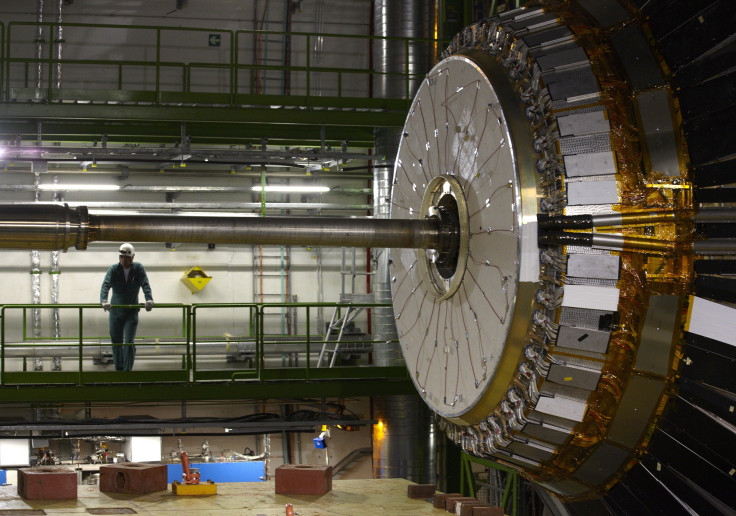Short Circuit In Magnet Delays Start Of CERN's Large Hadron Collider

The eagerly awaited start of CERN’s Large Hadron Collider (LHC) has been delayed because of a short circuit in the wiring of one of the vital magnets in the machine. The world’s largest and most powerful particle accelerator was due to restart later this week at much higher energies after a hiatus of over two years.
“Current indications suggest a delay of between a few days and several weeks. A full assessment is ongoing, and a revised schedule will be announced as soon as it is known,” CERN said in a statement released Tuesday. According to the research organization, the problem was a “well understood issue,” but it would take time to resolve it because the glitch was located in a cold section of the machine.
After a two-month warming up period, during which beams of protons would begin circulating in the 17-mile ring of superconducting magnets, the collider is scheduled to recommence full-fledged operations in May. Scientists hope that the juiced up collider, which functions by accelerating beams of protons and ions to near the speed of light, would give us a glimpse of the unseen dark universe made of the mysterious “dark matter.”
Dark matter and dark energy make up nearly 95 percent of the universe, and yet scientists haven't been able to detect them. Given that when LHC restarts this year, the energy of particle collisions will be 13 TeV (6.5 TeV per beam) compared to 8 TeV (4 TeV per beam) in 2012, scientists believe that it would increase the chances of detection of Weakly Interacting Massive Particles (WIMPs), which, if they exist, would be the leading candidates to explain dark matter’s composition.
“All the signs are good for a great run 2,” CERN Director General Rolf Heuer said in the statement. “In the grand scheme of things, a few weeks delay in humankind’s quest to understand our universe is little more than the blink of an eye.”
In addition to the detection of dark matter particles, scientists are also seeking to either extend the scope of, or “break,” the widely accepted Standard Model of physics. Researchers would be looking for evidence of supersymmetry, which predicts that there are more massive “super partners” for every known particle, and test ideas that could very well prove the existence of parallel universes in unseen dimensions.
© Copyright IBTimes 2024. All rights reserved.












